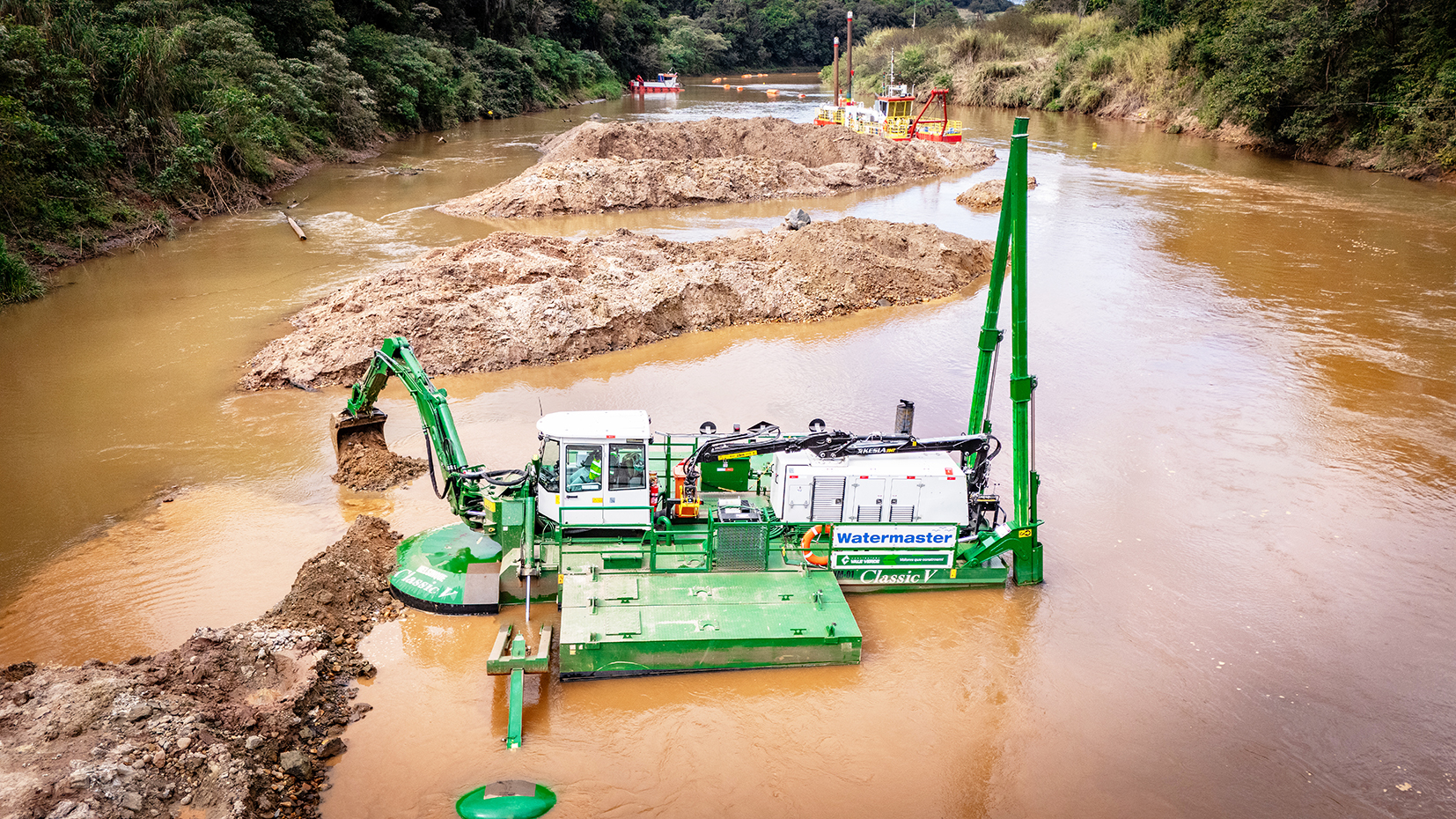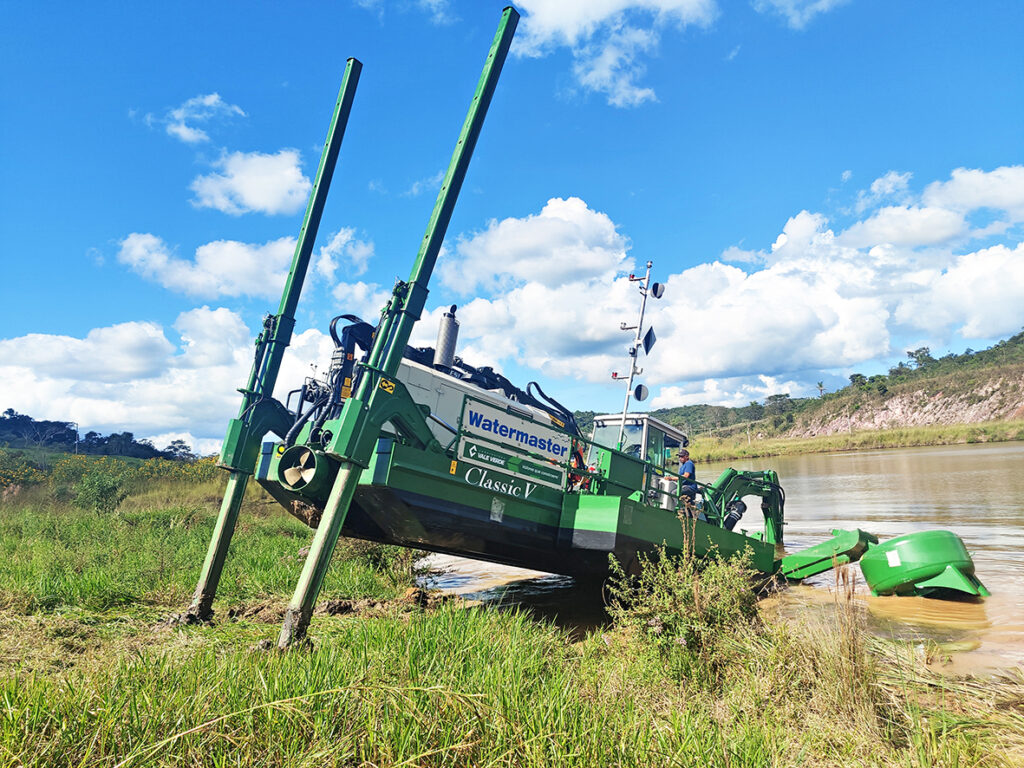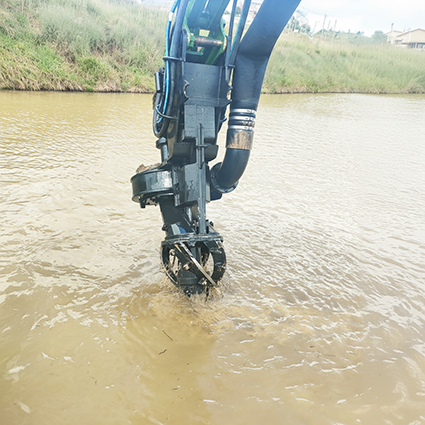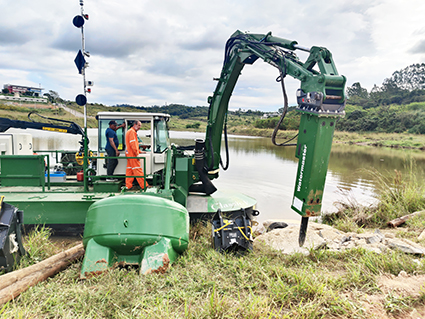In January 2019, a tailings dam collapsed in Brumadinho, releasing a large volume of mining residues into the Paraopeba River. As part of the mining company’s recovery program, Construtora Vale Verde is now removing tailings from a 6 km stretch of the river. The toughest areas are where the water is very shallow, the banks unstable and road access is limited. To reach them without building new roads or other temporary works, the team uses an amphibious Watermaster Classic V — the first in Brazil. It reaches and works in the most challenging sections of the river where the rest of the fleet cannot. The goal is to remove the tailings safely so the Paraopeba and the communities along it can recover.
where the tailings are
Most tailings are near the riverbanks on shallow bars and inside bends where the current is slow. They block small water intakes and farm pumps. When water is low, some stretches are too shallow for boats, and local ferries must stop. After rain, the deposits move, muddy the water again, and erode the banks. Muddy water harms fish and plants and lowers water quality for local use.
WHY WATERMASTER IS NEEDED
Vale Verde’s fleet includes work barges with 20-ton excavators, transport barges, a tugboat, a workboat and a cutter-suction dredger (CSD). These are conventional floating units, not amphibious, so they need draft to operate and have limited mobility. They cannot access or work in the most shallow parts of the river.

The amphibious Watermaster handles those shallow areas. It reaches remote banks without building new access roads or temporary floating platforms/bridges. It walks in to water from land using its rear spuds and excavator arm, so no crane is needed. From there it self-propels through deeper parts and crawls over very shallow or dry sections to reach the work site. On site, it sets its four stabilizers (front and rear spuds) into the uneven riverbed and works safely from a stable position in water up to 6 metres deep.
Although this is the first Watermaster Classic V in Brazil, maintaining it is easy. Watermaster is a well documented serial product with clear operating, service and safety manuals. It uses top components such as a Caterpillar engine and Bosch Rexroth hydraulics, so parts and service are easily available locally. Aquamec in Finland provides direct technical support and can send spare parts quickly from stock.
Aquamec’s trainer came from Finland to commission the machine and work two weeks alongside local operators and mechanics, training them in its safe and efficient use.
OPENING ACCESS TO THE TAILINGS
Watermaster’s first task is to open the shallow stretches of river sediment that block access to the tailings. With its bucket, it clears these bars and creates the draft needed for the CSD and the excavators on barges to work. It also helps maintain the CSD’s discharge pipeline. If large rocks are in the way, Watermaster breaks them with its hydraulic hammer to keep the way open for the larger units.
Watermaster can also suction dredge. Because its submersible pump is integrated with the cutter head under water the slurry enters the pump immediately, giving higher solids concentration and lower turbidity compared to conventional pumps on deck.
After rain the current grows stronger and moves the river’s sediments. Shallow spots appear in new places and access routes can close. Watermaster is valuable here because it reopens these sections quickly and keeps the whole operation moving.
REMOVING THE TAILINGS
The work takes place in a sensitive river environment. Turbidity limits are strict and water quality is monitored daily upstream and downstream by environmental agencies.
Vale Verde manages the site from start to finish. The work is carried out safely with careful technical planning and environmental responsibility.
The CSD removes tailings by suction dredging the slurry through a pipeline to a dewatering area on land. On this stretch the pumping distance is about 3 km with 25 metres of lift using a booster.
Excavators on barges work alongside the CSD. They dig tailings and load transport barges. Loaded barges leave for the dewatering area while an empty barge takes their place. This shuttle keeps the loading point working without pauses.
Progress is documented with daily production reports and regular riverbed surveys, so the quantities removed and their locations are clear to the client and the authorities.
WHY RESTORATION IS IMPORTANT
As Hugo Soares, CEO of Construtora Vale Verde, explains: “We respect the riparian forest and the river’s life. This work is a milestone for the region’s recovery and a step forward for riverside communities.”
The work is done so the river can recover and people nearby can keep living as usual. Each load removed reduces the risk of material being carried downstream. Cleaner water supports fish and plants in the river. Stronger banks protect communities and keep river crossings, water supply and local transport running.
Day by day, the Paraopeba River becomes clearer, safer and healthier as it returns toward its natural state.

Amphibious Watermaster was the missing link
needed for accessing difficult restoration areas


